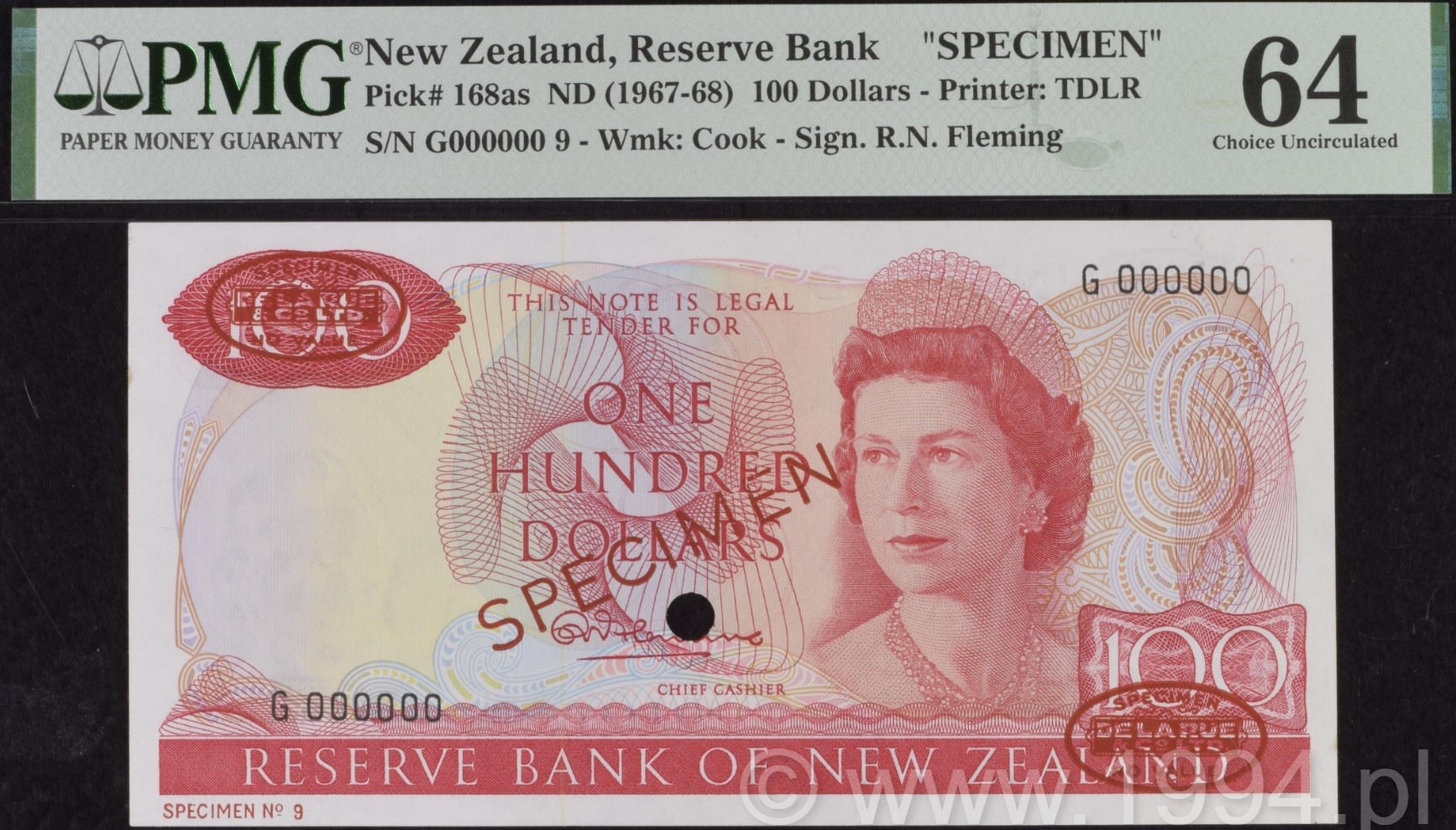Description and research notes
The 1967 hundred-dollar specimen marks the birth of New Zealand’s decimal currency system and the brief appearance of R.N. Fleming’s signature on its highest denomination. Fleming—Roderick Ninian Fleming—had spent decades within the Reserve Bank, guiding the transition from pre-decimal sterling accounts into the modern dollar framework. By 1967, near the end of his tenure as Chief Cashier, he approved only the first short series of decimal issues before retiring in 1969. His signature therefore appears on very few notes, and only the inaugural printings of the new hundred bear his name.
Printed by Thomas De La Rue & Company in London, these early decimal specimens were distributed to central banks and internal archives as reference pieces. This example carries the bold red diagonal 'SPECIMEN' overprint and De La Rue’s oval control stamp, accompanied by a single punch-hole cancellation. The design introduced Queen Elizabeth II’s portrait on the obverse and Captain James Cook’s watermark—a symbolic pairing of the Commonwealth’s reigning monarch with New Zealand’s most famous explorer.
As one of the very first decimal hundreds and the only denomination Fleming personally authorized, surviving examples bridge the colonial and modern eras of New Zealand currency. Their rarity derives from both Fleming’s two-year signing window and the tiny specimen allotment released by De La Rue before the change of signatory in 1969. PMG 64 Choice Uncirculated, showing full embossing and brilliant color typical of mid-century De La Rue work, this note represents the ceremonial opening of New Zealand’s dollar age.
